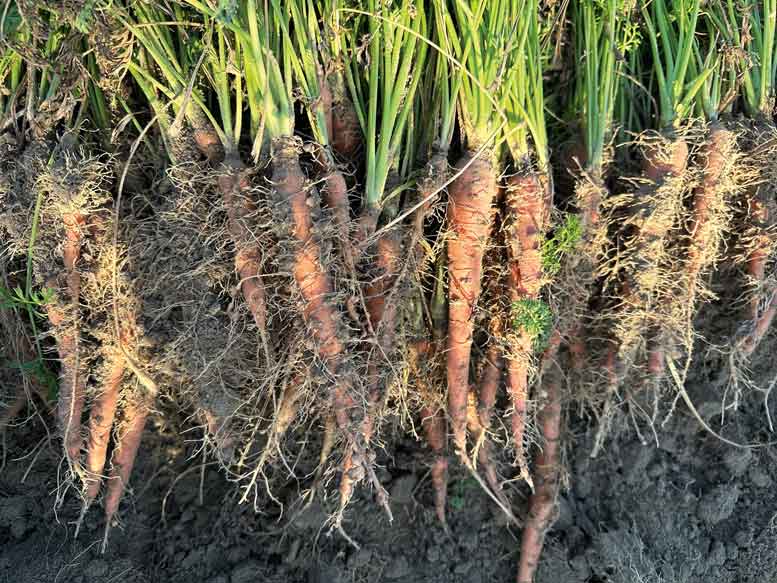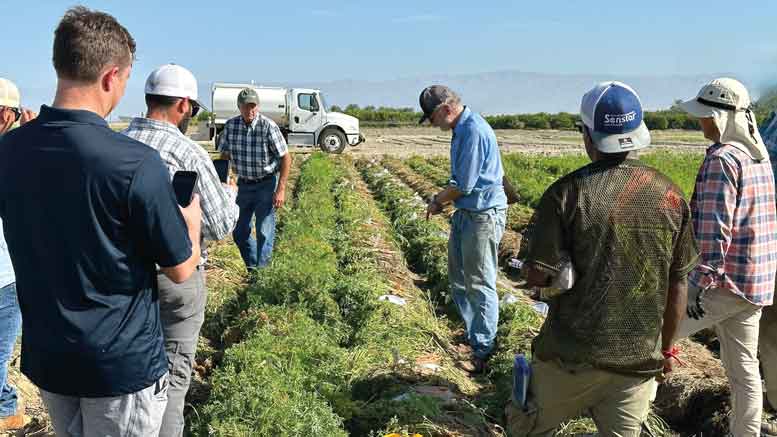|
Click to listen to this article
|
Photos by Kevser Ozel, University of Wisconsin
Breeding efforts seem to be paying off as researchers are seeing more and more carrots showing resistance to root-knot nematodes.
Carrots were put to the test in a recent trial that included a large collection of open-pollinated carrots from the USDA germplasm collection, along with breeding materials from the University of Wisconsin’s program and the seed industry. The trial evaluated the selections for root-knot nematode resistance in the field with the objective of identifying resistant carrot genotypes for future breeding efforts and genetic research.
The annual trial has been ongoing for several decades at California locations including Coachella, Kearney and Irvine. This year’s trial took place at the University of California – Riverside Coachella Valley Agricultural Research Center. There, Phil Roberts and Bill Matthews maintain a root-knot nematode-inoculated field by growing crops that are susceptible to root-knot nematodes, which helps keep a high and fairly uniform nematode population in the field. The University of California-Riverside team then grew carrot breeding material that the seed industry chose to be evaluated for root-knot nematode resistance.


Nematode pressure was very high in this year’s trial, and results overall were consistent for breeding stocks that were included from previous years’ trials. This year’s trial demonstrated that even though most carrots are susceptible to root-knot nematodes, including all available commercial cultivars tested, breeding efforts are working, as evaluators saw an increasing amount of resistant breeding material. The trial yielded some really good-looking resistant carrots in the cello, cut-and-peel, and novel-colored carrot categories, according to organizers.
Carrot growers, seed industry reps and the public were invited to the trial display at harvest, with a good number and diversity of participants in attendance, from growers to researchers in the seed industry and universities.

